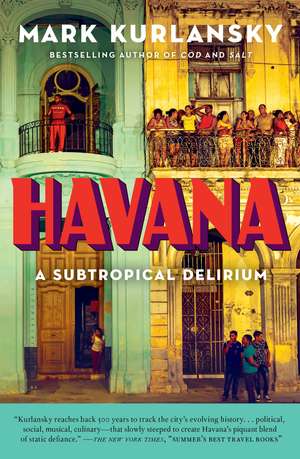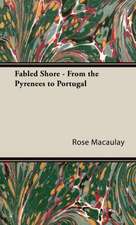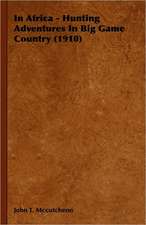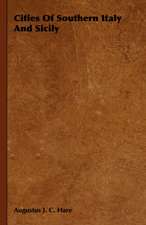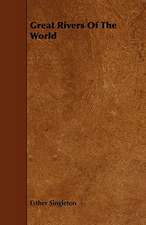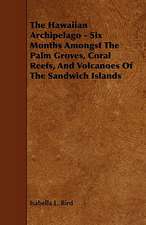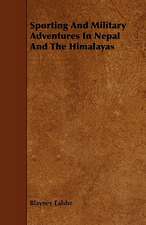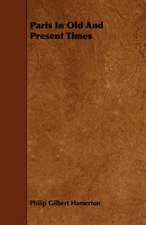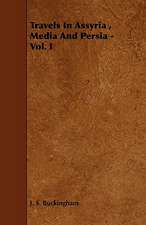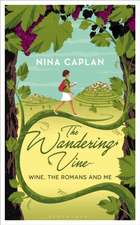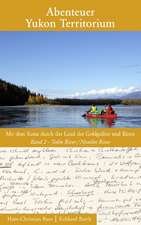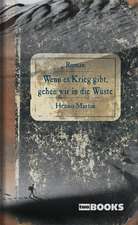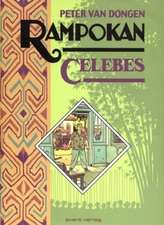Havana: A Subtropical Delirium
Autor Mark Kurlanskyen Limba Engleză Paperback – 13 iun 2018
Preț: 52.93 lei
Preț vechi: 69.69 lei
-24% Nou
Puncte Express: 79
Preț estimativ în valută:
10.13€ • 10.58$ • 8.36£
10.13€ • 10.58$ • 8.36£
Carte disponibilă
Livrare economică 25 martie-08 aprilie
Livrare express 08-14 martie pentru 36.08 lei
Preluare comenzi: 021 569.72.76
Specificații
ISBN-13: 9781632863928
ISBN-10: 1632863928
Pagini: 272
Ilustrații: Author's pen and ink drawings, B&W photos and engravings t/o
Dimensiuni: 129 x 197 x 24 mm
Greutate: 0.23 kg
Editura: Bloomsbury Publishing
Colecția Bloomsbury USA
Locul publicării:New York, United States
ISBN-10: 1632863928
Pagini: 272
Ilustrații: Author's pen and ink drawings, B&W photos and engravings t/o
Dimensiuni: 129 x 197 x 24 mm
Greutate: 0.23 kg
Editura: Bloomsbury Publishing
Colecția Bloomsbury USA
Locul publicării:New York, United States
Caracteristici
Perfect timing for a book on a fascinating city: In the wake of Castro's death, and as commercial US airlines send their first flights to Havana under the gaze of a new administration, the world is watching Cuba's future, fascinated. Kurlansky, who has spent significant time in Havana, unveils the city.
Notă biografică
Mark Kurlansky is the New York Times bestselling author of Milk!, Cod, Salt, Paper, The Basque History of the World, 1968, The Big Oyster, International Night, The Eastern Stars, A Continent of Islands, and The White Man in the Tree and Other Stories. He received the Dayton Literary Peace Prize for Nonviolence, Bon Appetit's Food Writer of the Year Award, the James Beard Award, and the Glenfiddich Award. Salt was a Los Angeles Times Book Prize finalist. He spent ten years as Caribbean correspondent for the Chicago Tribune. He lives in New York City. www.markkurlansky.com.
Recenzii
Kurlansky reaches back 500 years to track the city's evolving history, separating out the different strands--Spanish, African, American, Russian; political, social, musical, culinary--that slowly steeped to create Havana's piquant blend of static defiance.
A happy hybrid, Havana: A Subtropical Delirium invokes the Cuban capital as an occasion to discuss the country's history, politics, food, architecture, music, religion and passion for baseball . . . Kurlansky approaches Havana like an Impressionist painter, building the image of this metropolis of 2 million inhabitants with subtle brushstrokes.
During his decade-long tenure as the Chicago Tribune's Caribbean correspondent in the 1980s, Mark Kurlansky began traveling to Cuba. Since this introduction to the island nation, the journalist grew to know and love the beautiful, messy capital. Drawing on Havana's history, Kurlansky starts with Columbus' arrival in 1492 and examines the city's role in the slave trade and its lasting effects. But he also brings us into the contemporary culture, highlighting the city's lively music, dance and art scenes, and supplying us with recipes to tasty Cuban dishes.
This little gem of a book by the prolific Kurlansky is a revelation . . . At a most auspicious moment in the history of Cuba and Havana, Kurlansky, who has spent much time in the country as a journalist, writes an eloquent love letter to one of the world's great cities.
An affectionate, richly detailed, brief biography of a unique city.
This extremely readable book is not preachy, not dogmatic, not shrill. As in life, there is a mixture of both good and evil, and Kurlansky, a frequent Cuba correspondent, covers it well.
Warmly rendered and rich with the insights of an observer intimate with his subject, this paean to the city of Havana is as engaging as it is timely. The chapters read like a series of colorful picture postcards, each one a touchstone of Havana's history and Cuban culture.
Few countries seem as alluring as this island nation, long cloistered from American travelers, which welcomed its first commercial U.S. flight--from Fort Lauderdale--this past August . . . Havana is Mark Kurlansky's cultural history of a city that he began visiting regularly in the 1980s, when he covered the Caribbean for the Chicago Tribune.
We are in good hands to explore this diabolically alluring city with New York Times bestselling author Mark Kurlansky in Havana: A Subtropical Delirium. His is an insider's view of the ramshackle charm and special cadence of Havana, its tattered and elegant surprises and pulsating fun-loving life.
Havana is sui generis and addictive, and Mark Kurlansky really gets it.
Biographical portraits of cities are in vogue. This lively addition to the genre is essentially a history . . . Kurlansky found international fame in 1997 with his piscatorial portrait, Cod. The lengthy list of other titles he has penned is enough to make most professional writers want to shoot themselves--not only more than a dozen non-fiction works but novels and children's books as well. The bugger is also an award-winning food writer. Narrative history is his forte, however. His vignettes of the figures who moulded Havana are excellent. The story unfurls through grisly post-independence dictatorships and ends, inevitably, with Castro. Kurlansky is even-handed.
A highly readable and entertaining account of Cuban history and culture that I found hard to put down.
HAVANA is as enjoyable as it is fair, and above all features the beauty and essence of the city that makes it unmistakable. It is a colorful, descriptive piece that any person should warmly enjoy.
Perfect for anyone headed there or simply wishing to learn more about a city and country cloaked in romance and mystery.
Havana is an electrifying and multi-layered portrait of the long-elusive city.
Not quite a book on the history of Havana, but rather, the history of Havana-isms . . . The result is a book that strays from repeating what most already know about Havana, and instead tells the origins of the city's unique cultural characteristics . . . Kurlansky's guide to Havana is an entertaining collage of the attitudes that have existed throughout its five-century history.
A happy hybrid, Havana: A Subtropical Delirium invokes the Cuban capital as an occasion to discuss the country's history, politics, food, architecture, music, religion and passion for baseball . . . Kurlansky approaches Havana like an Impressionist painter, building the image of this metropolis of 2 million inhabitants with subtle brushstrokes.
During his decade-long tenure as the Chicago Tribune's Caribbean correspondent in the 1980s, Mark Kurlansky began traveling to Cuba. Since this introduction to the island nation, the journalist grew to know and love the beautiful, messy capital. Drawing on Havana's history, Kurlansky starts with Columbus' arrival in 1492 and examines the city's role in the slave trade and its lasting effects. But he also brings us into the contemporary culture, highlighting the city's lively music, dance and art scenes, and supplying us with recipes to tasty Cuban dishes.
This little gem of a book by the prolific Kurlansky is a revelation . . . At a most auspicious moment in the history of Cuba and Havana, Kurlansky, who has spent much time in the country as a journalist, writes an eloquent love letter to one of the world's great cities.
An affectionate, richly detailed, brief biography of a unique city.
This extremely readable book is not preachy, not dogmatic, not shrill. As in life, there is a mixture of both good and evil, and Kurlansky, a frequent Cuba correspondent, covers it well.
Warmly rendered and rich with the insights of an observer intimate with his subject, this paean to the city of Havana is as engaging as it is timely. The chapters read like a series of colorful picture postcards, each one a touchstone of Havana's history and Cuban culture.
Few countries seem as alluring as this island nation, long cloistered from American travelers, which welcomed its first commercial U.S. flight--from Fort Lauderdale--this past August . . . Havana is Mark Kurlansky's cultural history of a city that he began visiting regularly in the 1980s, when he covered the Caribbean for the Chicago Tribune.
We are in good hands to explore this diabolically alluring city with New York Times bestselling author Mark Kurlansky in Havana: A Subtropical Delirium. His is an insider's view of the ramshackle charm and special cadence of Havana, its tattered and elegant surprises and pulsating fun-loving life.
Havana is sui generis and addictive, and Mark Kurlansky really gets it.
Biographical portraits of cities are in vogue. This lively addition to the genre is essentially a history . . . Kurlansky found international fame in 1997 with his piscatorial portrait, Cod. The lengthy list of other titles he has penned is enough to make most professional writers want to shoot themselves--not only more than a dozen non-fiction works but novels and children's books as well. The bugger is also an award-winning food writer. Narrative history is his forte, however. His vignettes of the figures who moulded Havana are excellent. The story unfurls through grisly post-independence dictatorships and ends, inevitably, with Castro. Kurlansky is even-handed.
A highly readable and entertaining account of Cuban history and culture that I found hard to put down.
HAVANA is as enjoyable as it is fair, and above all features the beauty and essence of the city that makes it unmistakable. It is a colorful, descriptive piece that any person should warmly enjoy.
Perfect for anyone headed there or simply wishing to learn more about a city and country cloaked in romance and mystery.
Havana is an electrifying and multi-layered portrait of the long-elusive city.
Not quite a book on the history of Havana, but rather, the history of Havana-isms . . . The result is a book that strays from repeating what most already know about Havana, and instead tells the origins of the city's unique cultural characteristics . . . Kurlansky's guide to Havana is an entertaining collage of the attitudes that have existed throughout its five-century history.
